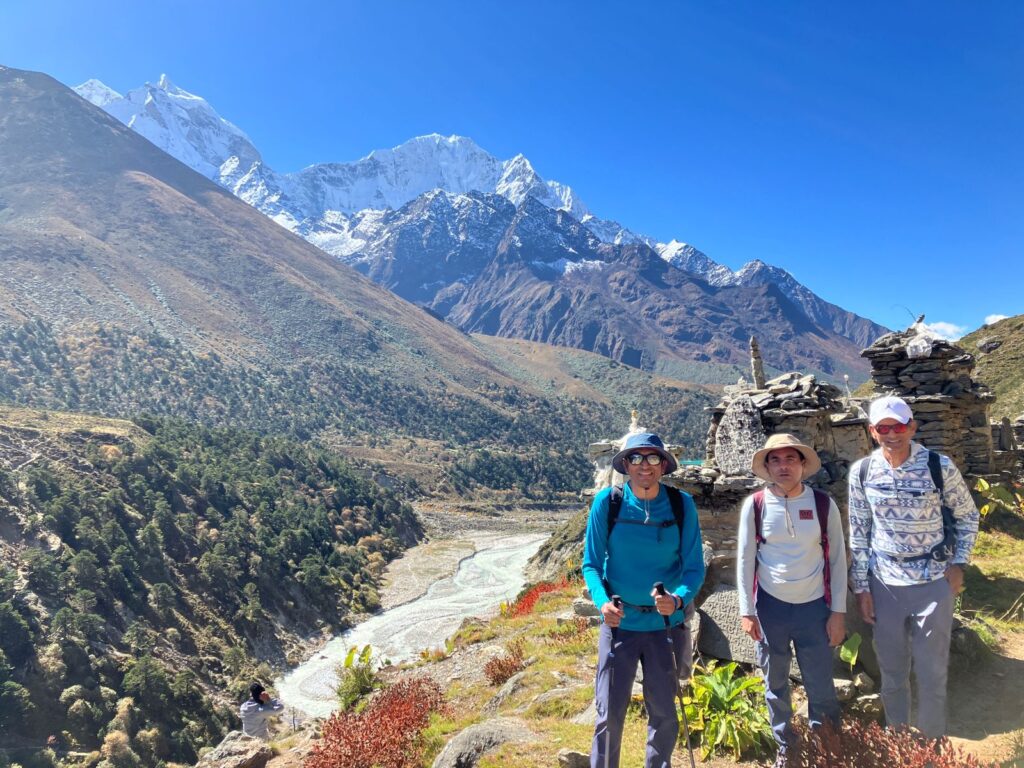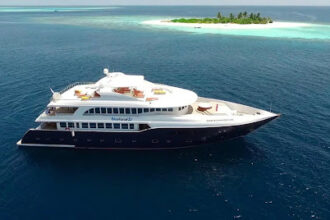Nepal, domestic to the Himalayas, is the extreme goal for trekking and mountaineering devotees. Its endless organization of trails takes you through peaceful valleys, old towns, and sky-scraping peaks that appear to whisper stories of enterprise and convention. Among the country’s numerous offerings, Annapurna Circuit trek, Langtang Valley trek, Pikey peak trek, and Mera peak Climbing stand out as the best treks for those looking to drench themselves in nature and Nepali culture. These treks offer an exciting combination of common magnificence, social experiences, and physical challenge—ideal for trekkers and climbers of changing interface and involvement levels.
Annapurna Circuit Trek
The Annapurna Circuit trek is one of the most incredible treks in the world. This classic circuit takes you through a wide assortment of landscapes—from lavish subtropical timberlands and terraced areas to elevated territory and tall mountain deserts. The path circles the Annapurna massif, advertising marvelous sees of monsters like Annapurna I, Dhaulagiri, Manaslu, and Machhapuchhre. This trek not as it were offers a shocking view but moreover brings you in touch with assorted societies and ways of life, counting Gurung, Thakali, and Tibetan-influenced communities. The tall point of the trek, Thorong La Pass (5,416m), offers an emotional perspective and a genuine sense of accomplishment.
Langtang Valley Trek
The Langtang Valley trek is one of the most open, however underrated treks in Nepal. Found fair north of Kathmandu, this trek is the culmination for those who need a beautiful and socially immersive trekking involvement without the swarms. The path takes after the Langtang Stream through thick woodlands of rhododendron and bamboo, continuously climbing to open snow capped glades and sensational icy masses. You’ll witness grand peaks like Langtang Lirung (7,227m), Ganesh Himal, and Dorje Lakpa. This valley was essentially affected by the 2015 seismic tremor but has since made a momentous recuperation. The versatility of the individuals, combined with the area’s crude excellence, makes this trek an candidly enhancing trek.
Pikey peak trek
For a brief and less strenuous however unimaginably fulfilling trekking and climbing involvement, Pikey peak trek is a covered up diamond. Found in the lower Everest region, this top (4,065m) offers one of the best all encompassing dawn views over Everest, Kanchenjunga, Lhotse, and Makalu. The trek passes through excellent timberlands, religious communities, and Sherpa towns, giving a hint into country mountain life. What makes Pikey peak particularly appealing is its tranquility—few trekkers wander here, permitting for a more individual and tranquil association with the Himalayas. It’s a perfect choice for trekkers who need to combine a gentle climb with social immersion.
Mera peak Climbing
Standing tall at 6,476 meters, Mera Peak Climbing is Nepal’s most noteworthy trekking top and a favorite among experienced searchers looking to thrust their limits. The climb is in fact direct but requires great physical condition and acclimatization due to its tall elevation. The course to Mera peak winds through the excellent and inaccessible Hinku Valley, taking you through flawless woodlands, elevated knolls, and frosty moraines. From the summit, the sea is jaw-dropping—five of the world’s six most elevated mountains (Everest, Lhotse, Makalu, Kanchenjunga, and Cho Oyu) can be seen on a clear day. Mera peak is perfect for those planning for higher climbs or looking for a genuine Himalayan challenge.
Why Select These Treks
These four treks and climbs cater to a wide run of explorers. The Annapurna Circuit trek is perfect for those needing a classic, long-distance trek with wealthy culture and sensational height. Langtang Valley trek culminates for those brief on time however looking for crude magnificence and social differences. Pikey peak trek offers an off-the-beaten-path choice with wonderful sees and negligible swarming. In the interim, Mera peak Climbing gives the idealized presentation to high-altitude mountaineering without extraordinary specialized trouble. Each of these treks has its own special charm, making them appropriate for both first-time guests and prepared trekkers alike.
Routes and Highlights for These Treks
The Annapurna Circuit regularly starts in Besisahar and closes in Jomsom or Tatopani. Major highlights incorporate the Marsyangdi Valley, Manang, Thorong La Pass, Muktinath Sanctuary, and the emotional Kali Gandaki Pig out. The course offers extraordinary geological and social differences, regularly changing each day of the trek.
The Langtang Valley trek begins from Syabrubesi and climbs through Llama Inn, Langtang Town, and Kyanjin Gompa. Key highlights incorporate the shocking Langtang Lirung icy mass, Buddhist religious communities, yak pastures, and all encompassing perspectives like Tserko Ri.
Pikey peak trek by and large begins from Dhap or Jhapre. The course winds through Sherpa towns, religious communities, and thick rhododendron timberlands some time recently coming to the summit of Pikey peak. The dawn sea from the summit is the supreme highlight.
Mera peak Climbing ordinarily begins from Lukla and heads south into the Hinku Valley. After passing through towns like Khote and Khare, trekkers reach the base camp. The summit thrust starts some time during the day break and rewards climbers with one of the most broad Himalayan panoramas.
Best Time
The best seasons for all these treks are spring (March to May) and harvest time (September to November). Amid these months, the skies are clear, temperatures are direct, and the trails are at their best in terms of perceivability and excellence. Mera peak, due to its tall height, ought to entirely be endeavored amid these seasons to maintain a strategic distance from snowstorms and extraordinary cold. Pikey peak can moreover be trekked amid winter (December to February) for those looking for isolation and are arranged for cold conditions. Langtang and Annapurna are available most of the year but amid the overwhelming storm season (June to August), when trails end up sloppy and seas are limited.
Culture Experience for These Treks
The social encounters over these treks are fantastically different. On the Annapurna Circuit, trekkers experience Hindu and Buddhist conventions, particularly the Thakali and Gurung societies, along with antiquated religious communities and supplication banners vacillating in the wind. In Langtang Valley, Tibetan Buddhism is predominant, and trekkers frequently take part in otherworldly ceremonies at gompas and associated with Tamang communities who share centuries-old traditions.
In the Pikey peak region, trekkers involve true Sherpa culture in its purest frame, distant from the tourist-heavy zones of Everest. You can remain in cloisters, witness mountain ceremonies, and appreciate Sherpa neighborliness. Mera peak, in spite of the fact that it is inaccessible, offers brief but wealthy social intelligence with Rai and Sherpa towns, particularly in the Hinku Valley.
Food and Accommodation for These Treks
All treks give a combination of teahouse housing and nearby suppers, ordinarily Nepali dishes like dal bhat, noodles, momos, and Tibetan bread. On the Annapurna Circuit and Langtang Valley trek, teahouses are well-established, advertising private rooms, Wi-Fi, and hot showers. Nourishment alternatives are differing due to the ubiquity of these routes.Pikey peak has unassuming however cozy homestays and teahouses that serve nearby Sherpa cooking. It’s prudent to carry a few snacks and fundamentals as offices are essential. Mera peak Climbing includes camping at higher elevations and teahouse remains in lower districts. As height increments, nourishment gets to be more essential, and costs rise due to the inaccessible logistics.
Tips for Planning and Preparation
To make the most of these treks, arrange ahead and prepare legitimately. Construct stamina and continuance through cardio and climbing home. For Mera peak and Annapurna Circuit, guarantee you have involvement trekking at tall elevations and consider a guided trip for included security and neighborhood ability. Get protections that cover high-altitude trekking and clearing. Continuously carry basics like a water purifier, appropriate trekking boots, down coat, and a to begin with help kit.
Book grants in development: Annapurna and Langtang require the TIMS card and preservation region licenses, whereas Mera peak requires a climbing permit. Enlist an authorized direct or doorman if you’re unused to Himalayan trekking or need to back the neighborhood economy.
Tips for a Successful Tour
Acclimatization is key—don’t surge, particularly for high-altitude treks like Annapurna and Mera peak. Hydrate regularly and eat sufficient calories to keep up vitality. Regarding nearby traditions: inquire about some time recently taking photographs, dress unassumingly in towns, and welcome local people with “Namaste.”
Pack light but shrewd. Layer your clothing and maintain a strategic distance from overpacking non-essentials. Be rationally arranged for fundamental living conditions and unusual climate. Most critically, tune in to your body—if side effects of elevation ailment show up, slip and rest.
Use neighborhood offices for coordinations if you’re climbing Mera or Pikey Peak—they oversee everything from gear to licenses. At long last, be adaptable with your plan. Climate and path conditions can alter quickly, particularly in the tall mountains.
Conclusion
Whether you’re a first-time trekker or an experienced mountain dweller, these four Himalayan experiences—Annapurna Circuit trek, Langtang Valley trek, Pikey peak trek, and Mera peak Climbing—promise exceptional enterprises. Each path offers its claim enchantment, whether it’s strolling underneath towering peaks, interfacing with strong mountain communities, or standing on a summit as the sun rises over the most elevated places on soil. Nepal proceeds to rule preeminent for trekking since of its idealized mix of nature, culture, and challenge. Presently is the time to pack your adapter, bind up your boots, and head to the Himalayas for the trekking travel of a lifetime.
FAQs
Q1: Is a direct required for these treks?
A direct is not obligatory for Langtang and Annapurna if you’re experienced, but exceedingly suggested. For Mera peak Climbing, a direct is fundamental due to tall height and specialized factors.
Q2: Do I require earlier climbing involvement for Mera Peak?
No specialized involvement is required, but great physical wellness and earlier trekking involvement at height are emphatically recommended.
Q3: How numerous days are required for each trek?
Annapurna Circuit: 14–18 days. Langtang Valley: 7–10 days. Pikey peak: 6–8 days. Mera peak: 17–21 days counting acclimatization and summit days.
Q4: Can I charge my phone and utilize Wi-Fi on the trek?
Yes, in Annapurna and Langtang, you’ll discover charging focuses and Wi-Fi in most teahouses. Constrained or no charging and web offices in inaccessible parts of Mera peak and Pikey Peak.
Q5: What kind of grants are needed?
Annapurna and Langtang require TIMS and range licenses. Mera Peak requires a climbing permit. Pikey peak requires the Gaurishankar Preservation Zone Allow.
Contact Details
Company address: Everest Trekking Routes Pvt. Ltd.
16 Khumbu, Nayabazaar, Kathmandu, Nepal
Mobile : +977-9843467921 (Rabin)

















